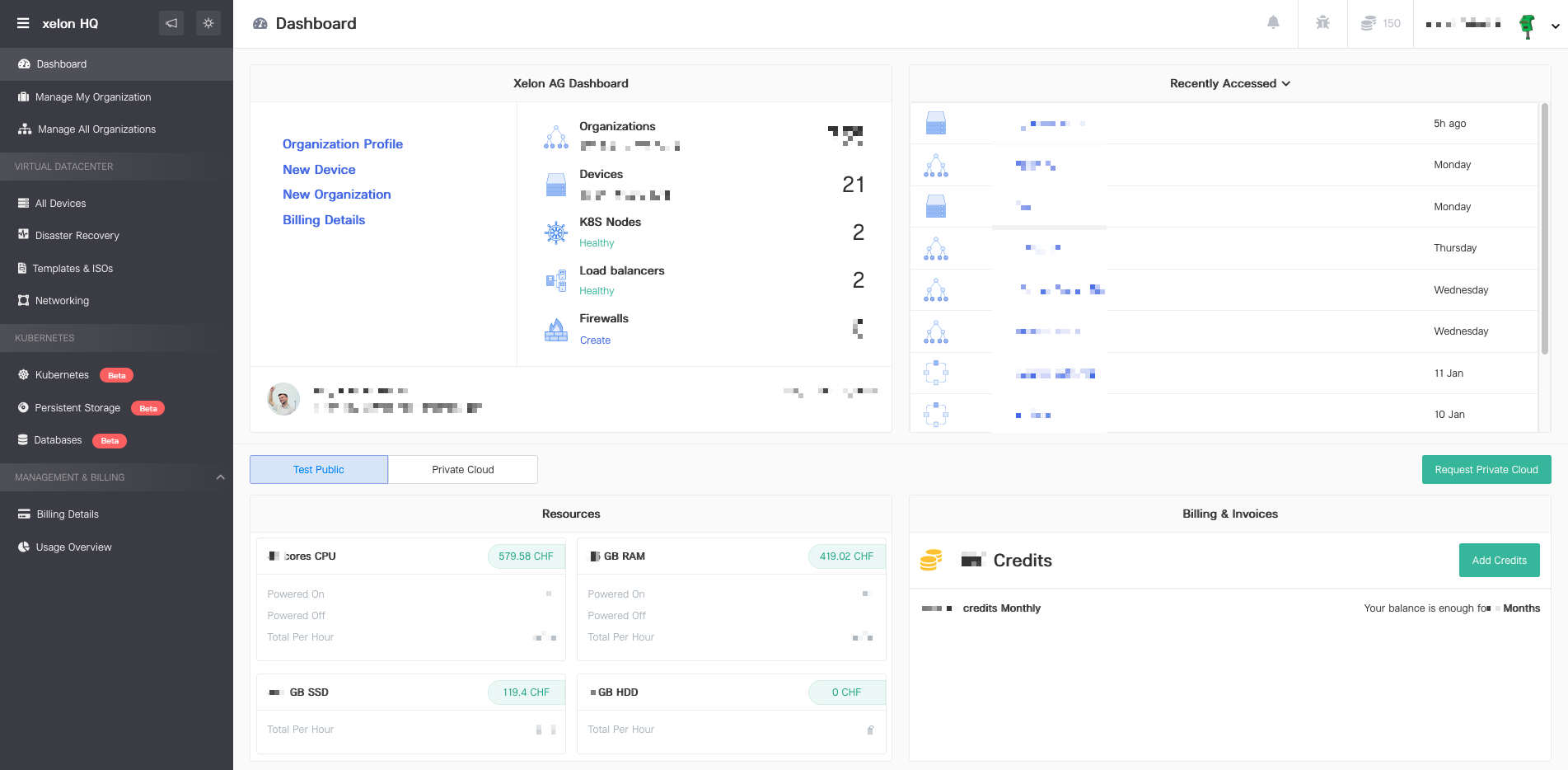We quickly introduce you into the: sign-up and sign-in process, dashboard, organizations and users management & infrastructure building basics.
Here at Xelon, we're on our mission to simplify infrastructure management and app scaling for developers, sysadmins, and DevOps engineers. This article will guide you through the basics of Xelon HQ and advise on the next steps. Let us know if you have an idea of how to improve our quick start.
Michael Dudli, CEO
Get the big picture
Our Dashboard provides you with a quick overview around:
- Resources usage
- Systems status
- Recent devices
- Billing & invoices
- Activity log

Manage organization and users
Xelon HQ allows you to manage your organization and users. We recommend you to create personal and named users and avoid using generic accounts. Xelon HQ allows you to granularly set and restrict various permissions for specific users.
Xelon HQ is a multi-tenancy platform and allows you to create sub-organizations with its own users and infrastructure, to further separate and secure your services.
Learn more about the concept of users, organizations, and permissions by following this link: Organization & User Management
Get started with setting up infrastructure
Now, that we covered the basics, let's jump into what you really signed up for: to run your cloud applications and workloads smartly, securely, and quickly.
The platform allows you to create Linux, Windows, and Kubernetes environments, where you can host your applications and workloads on. In addition, it offers a bunch of additional services that you may need around workloads, such as Firewalls, Load Balancers, Databases or DNS. All services are configured by the click of a mouse and provisioned within seconds.
We have created four guides for the most common scenarios:
Looking for a changelog? Here you are.
